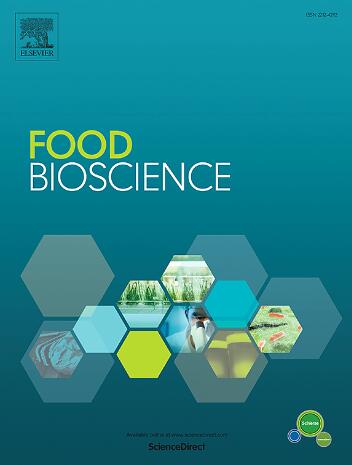Research progress on glucose-regulating mechanism of food-derived polysaccharides
IF 4.8
1区 农林科学
Q1 FOOD SCIENCE & TECHNOLOGY
引用次数: 0
Abstract
Mounting food-derived polysaccharides play critical roles in regulating glucose metabolism and alleviating diabetes. However, their structure-activity relationship is unclear. There is still no systematic elaboration of the chemical structures of food-derived polysaccharides with glucose-lowing effects in vivo or in vitro. A correct understanding of the structural types of polysaccharides and breaking through the limitations of structural theory contributes to clarify their structure-activity relationship and understand the biological basis of human health. In this review, sources (118 edible plant and fungus, a total of 60 materials), characteristics, such as molecular weight (5–200 kDa), monosaccharides composition (Top 5: glucose, galactose, arabinose, mannose, rhamnose), glycosidic linkages (1 → 3 glucoside bonds), etc. and structural types (glucans and heteropolysaccharides) of these polysaccharides were comprehensively summarized and analyzed. This paper also summarized hypoglycemic mechanism of food-derived polysaccharides, including regulation of digestive enzyme activity, glucose uptake, glycogen synthesis, gluconeogenesis, glycolysis, insulin secretion, lipid metabolism, inflammation response, oxidative stress, intestinal microbiota, metabolites to provide theoretical support for the development and application of polysaccharides from food-derived materials (in particular, edible fungi) in the field of functional food and in diabetes prevention.
食源性多糖调节血糖机制的研究进展
越来越多的食源性多糖在调节葡萄糖代谢和缓解糖尿病方面发挥着重要作用。然而,它们的构效关系尚不清楚。在体内或体外具有降糖作用的食源性多糖的化学结构仍然没有系统的阐述。正确认识多糖的结构类型,突破结构理论的局限,有助于厘清多糖的构效关系,认识人体健康的生物学基础。本文对这些多糖的来源(118种食用植物和真菌,共60种材料)、分子量(5 - 200 kDa)、单糖组成(前5种:葡萄糖、半乳糖、阿拉伯糖、甘露糖、鼠李糖)、糖苷键(1→3个糖苷键)等特征以及结构类型(葡聚糖和杂多糖)进行了综合总结和分析。本文还从消化酶活性、葡萄糖摄取、糖原合成、糖异生、糖酵解、胰岛素分泌、脂质代谢、炎症反应、氧化应激、肠道菌群、代谢物等方面对食源性多糖的降糖机制进行了综述,为食源性多糖的开发和应用提供理论支持。食用菌)在功能性食品和糖尿病预防领域的应用。
本文章由计算机程序翻译,如有差异,请以英文原文为准。
求助全文
约1分钟内获得全文
求助全文
来源期刊

Food Bioscience
Biochemistry, Genetics and Molecular Biology-Biochemistry
CiteScore
6.40
自引率
5.80%
发文量
671
审稿时长
27 days
期刊介绍:
Food Bioscience is a peer-reviewed journal that aims to provide a forum for recent developments in the field of bio-related food research. The journal focuses on both fundamental and applied research worldwide, with special attention to ethnic and cultural aspects of food bioresearch.
 求助内容:
求助内容: 应助结果提醒方式:
应助结果提醒方式:


